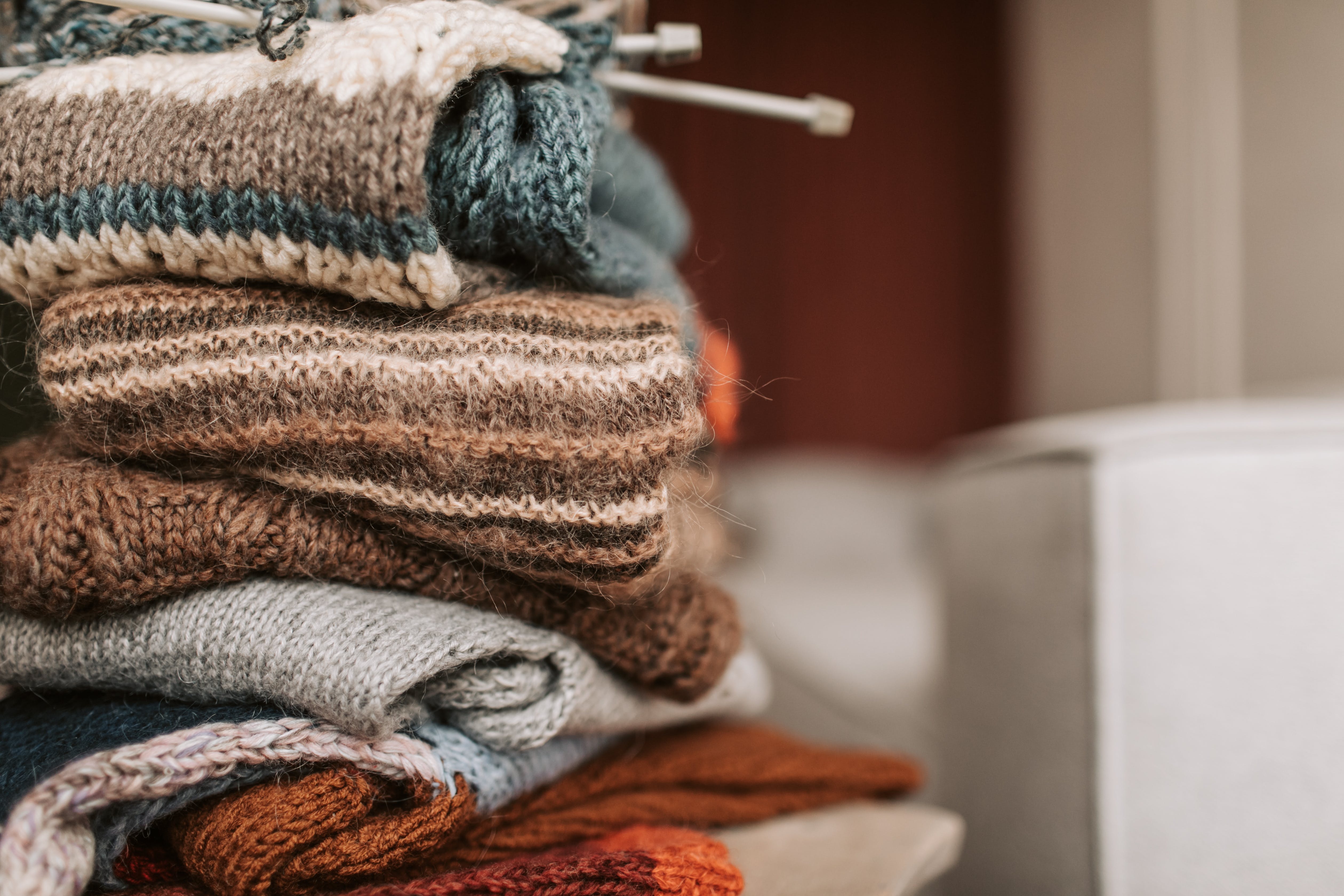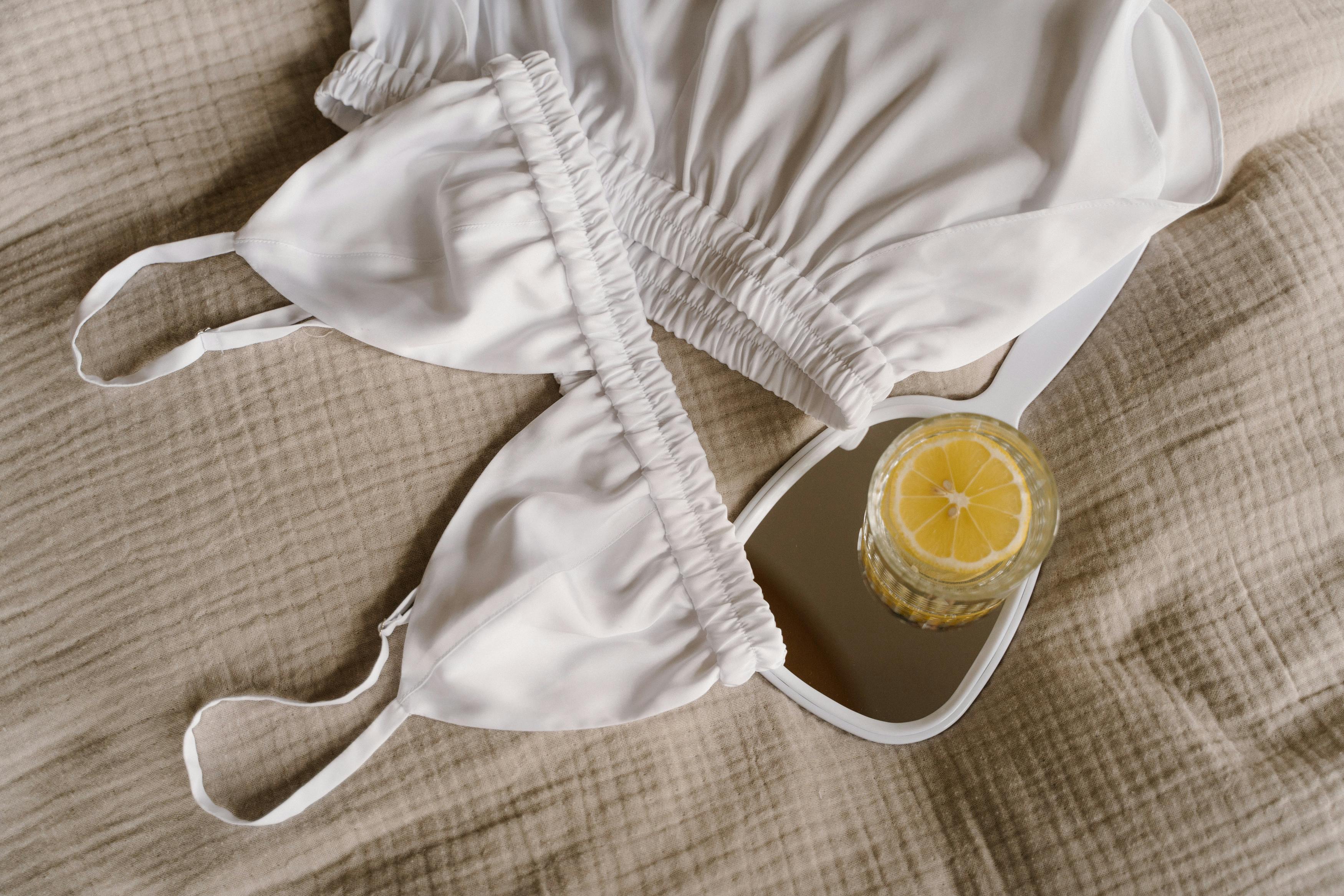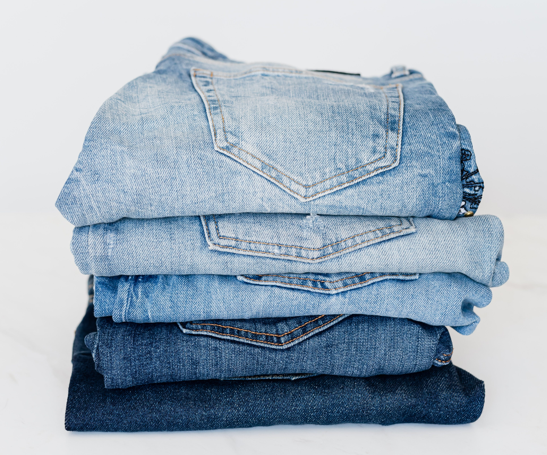If your wardrobe is full of white clothes that are no longer white but grey, if you've shrunk your sweater three sizes in the wash and stretched out your functional underwear two sizes larger, or if your favourite shirt came out of the laundry all wrinkled and your towels smell musty, if you're a mom unsure how to wash your baby's clothes without irritating their skin, and if your husband's shirts still have yellowed cuffs, then this article is for you. We'll show you how to wash different types of clothing and stop making those laundry mistakes.

Sort Your Clothes Out and Choose the Right Laundry Detergent
Before you start washing, don't forget to divide your clothes not only by colour but also by fabric and washing temperature. You can't put a blue silk blouse or a blue cashmere sweater in the washing machine with blue jeans, even if they are the same colour, because heavy denim and metal buttons can damage delicate silk or knits.
For different fabrics, you should use different laundry detergents. For white textiles, the most effective is powdered laundry detergent, which removes tough stains. You can also add washing soda for extra brightness.
For coloured and black clothing, liquid laundry gel is ideal. It doesn't contain aggressive bleaches, so it's much gentler on fabrics compared to powdered detergents.
For delicate and sportswear, use special laundry products designed for these types of clothing.
Clothing for Children or Allergy Sufferers
The skin of newborns as well as allergy sufferers is very delicate and sensitive, and therefore more prone to chafing and redness. Therefore, we recommend using a neutral, phosphate-free hypoallergenic laundry detergent. Avoid using powdered detergents, which are harder to rinse out of fabrics and can cause skin irritation.
If the label allows, wash children's clothing at 60 °C as warm water destroys pathogens. In addition to washing, we recommend ironing children's clothing to remove many bacteria. Similarly, steam cycles, typically found in higher-quality washing machines, provide a similar service. It's advisable to wash children's clothing separately from the rest of the family's garments to avoid bacterial contamination.
Avoid using fabric softeners and bleaches - their chemical residues are often the cause of dermatitis and allergies. If you want to add fragrance to children's clothing, go for Puella laundry perfume, which is suitable for this type of fabric. However, we recommend reducing the dosage by at least half in this case.
Shirts
To keep shirts looking like new for a long time and ensure they are perfectly clean and fresh, choose a washing temperature ranging from 30 to 40 °C. Before washing, unbutton all buttons, turn the shirt inside out, and check the cuffs and collar. If needed, gently scrub them with a soft brush and laundry soap before putting them in the washing machine.
Caution: Choose medium spin speeds to avoid excessive fabric shrinkage. After removing it from the washing machine, hang the shirt on a hanger (we recommend a light-coloured hanger) and button the top button. Dry the shirt in a place protected from direct sunlight. Avoid using a tumble dryer for shirts.
Jumpers and Sweaters
If you have cashmere, wool, angora, or merino clothing in your wardrobe, wash these pieces using a detergent for delicate fabrics or one containing lanolin. Lanolin is also suitable for gentle washing of functional underwear.
For washing all delicate fabrics, choose a gentle wash cycle and the lowest spin speed. Use mesh laundry bags for delicate items to protect them during spinning. For the most delicate fabrics or hand-knitted products, we recommend washing them by hand in lukewarm water with a suitable detergent.
Fine knitwear should never be dried hanging up. We recommend laying it flat on a drying rack and placing a towel or an old clean blanket underneath it to absorb the excess water.

T-shirts
Wash cotton T-shirts at 30°C using a washing programme designed for cotton. The low temperature ensures that the T-shirts do not shrink and their colours do not fade. If you have T-shirts made from materials other than cotton, follow the care instructions on the product label.
Underwear
For washing underwear, set the washing machine to a gentle cycle. Protect tights, bras, corsets, camisoles, knickers, and all other garments with straps or hooks by placing them in laundry bags to prevent twisting or snagging; fasten clasps and hooks to avoid them catching on the mesh. Do not use a tumble dryer. Air dry to prevent damage to underwires and straps.
Luxury underwear made from delicate fabrics like silk is best washed by hand. Soak the underwear for a few minutes in warm or cold water, then gently squeeze to wash; rinse and wrap in a towel to absorb excess moisture before hanging to dry. In contrast, cotton underwear can be safely washed in the washing machine at temperatures between 40 and 60°C.
You should disinfect your underwear in addition to washing it, as it comes into contact with parts of the body where bacteria can multiply. Therefore, it is advisable to wash it with a disinfectant detergent or add disinfectant to the wash. However, you should choose one that does not contain harmful substances. Additionally, you should not store dirty underwear in the same basket as other clothing and household textiles, especially kitchen towels, aprons, and similar items.
Swimwear
Swimwear should be rinsed thoroughly after coming from the pool or beach to remove chlorine or any sand or salt residues, which can cause fading or colour changes. Additionally, chlorine can damage the fabric's elasticity. Hand wash or machine wash at 30°C. If using a washing machine, place the swimwear in a mesh laundry bag. Do not tumble dry; let them air dry instead.

Sports and Outdoor Clothing
Sports clothing is essential for our physical well-being, but it is also highly exposed to sweat and odours. Therefore, it requires proper washing to restore it to its best condition.
If possible, hang your sports clothing outside to air out before washing. Feel free to leave it outside for several hours. This will help remove odours more easily during washing and restore a fresh scent. Select a washing temperature of 30°C, as higher temperatures could damage the properties of technical fabrics. To nip any sweat stains in the bud, hand wash them with a drop of concentrated liquid dish detergent, which is excellent for removing tough and greasy stains, before putting the clothes in the washing machine.
Avoid using fabric softener, as it significantly reduces the capillary performance of the fibres by clogging the channels that wick moisture away from the skin. If you want your sports clothing to smell fresh, use the Puella brand fabric softener alternative, which is suitable for functional and sportswear.
After washing, hang your sports clothing on a drying rack or clothesline. Be careful not to damage the seams and avoid creating wrinkles. For technical fabrics, it's best not to expose them directly to sunlight; instead, let them dry in a well-ventilated area.
Jeans
Jeans should not be washed frequently. If there are no visible stains, washing them every four to five wears is sufficient. Constant washing damages denim fabric. An alternative is using the freezer: simply place your jeans in a plastic bag and store them in the freezer. This will kill bacteria without damaging the fabric.
Wash them at 30°C using a gentle cycle or a special program for jeans and dark clothing. Use a mild detergent suitable for delicate or coloured clothes, and turn them inside out before washing. Avoid using fabric softener. Forget about using a tumble dryer. To ensure your jeans last longer, air dry them inside out in a well-ventilated area away from direct sunlight and without using clothespins, as this minimises stress on the fabric.
If you need to iron your jeans after drying, do so while they are still inside out, moving from the pockets towards the end of the legs.

Curtains and Drapes
While some curtains and drapes require dry cleaning, many can be washed at home. The first thing you need to do is prepare them for washing. Be sure to remove all hooks from the curtains before washing to avoid damaging the washing machine. If you choose to leave the hooks on, place the curtains in a protective laundry bag.
Wash curtains and drapes according to the instructions on the label. Cotton curtains are relatively easy to maintain, but wash drapes on a gentle cycle designed for curtain washing and always at a low temperature, not exceeding 30°C. Use a detergent formulated for delicate fabrics yet effective enough to remove dirt. If there are stains on the curtains or drapes, soak them for at least 30 minutes before washing.
After washing heavier curtains, dry them and iron them slightly damp according to the instructions on the label. Hang delicate curtains on the window immediately after removing them from the washing machine to prevent them from wrinkling. In general, curtains and drapes should be washed three to four times a year.
If you want your interior to smell beautifully for longer, not just after washing curtains, you can use Puella Room Spray, which is designed for household textiles. This allows you to easily freshen up your entire interior and create a unique and lovely atmosphere in your home.
